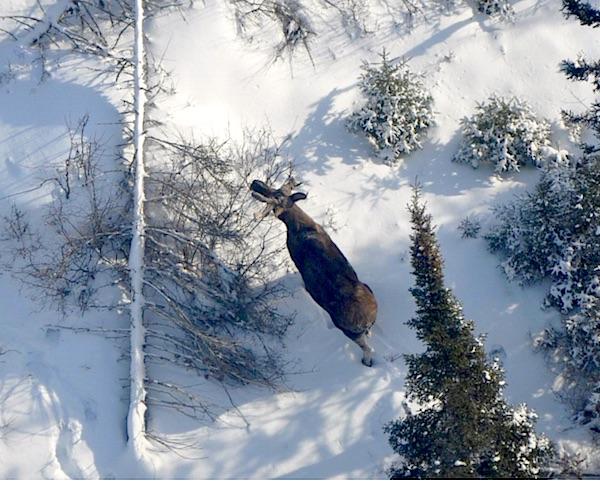
Voyageurs National Park's moose population seems to be holding steady, according to this past winter's aerial count/NPS
Steady is a good thing at Voyageurs National Park, where the resident moose population is holding constant with estimates from the past five years, according to wildlife biologists.
This past winter's aerial survey of the park's Kabetogama Peninsula placed the moose population at an estimate 46 animals, which is in line with the estimates from 2009-2014 of 40-51 animals.
The Kabetogama Peninsula is a 118-square mile roadless area that contains almost all of the park's moose population.
As in 2014, biologists observed few calves in 2015 and no sets of twins. The estimated calf:cow ratio was 0.38 and calves were 14 percent of the population. The bull:cow ratio observed during the 2015 survey (1.0) was higher than in previous years, but biologists said that likely was a reflection of their sampling protocol rather than an actual change in the adult sex ratio over the last year.
The continued apparent stability of the low-density population in Voyageurs is corroborated through ongoing monitoring of GPS-collared moose.None of the 10 collared adult moose have died since the last aerial survey was completed in 2014. Three additional collared moose survived at least 2-10 months until we lost contact with their collars. Overall, mean annual mortality of adult moose in Voyageurs National Park has been 7 percent since monitoring began in 2010. By comparison, annual mortality of adult moose in the declining northeastern Minnesota moose population in recent years has been as high as 20 percent.
Voyageurs National Park is at the current southern extent of moose range in North America. Warmer annual and summer temperatures may be stressing moose populations in the region, park biologists said. The moose population declined by more than 60 percent between 2006-2015 in northeastern Minnesota; several areas in adjacent Ontario also documented recent declines.
There are likely multiple factors involved in the observed declines including climate-related stresses on health and reproductive status, diseases and parasites, predation, and changes in habitat. Moose in Voyageurs experience all of these factors, including documented deaths from the fatal brainworm parasite and other health-related effects. However, wolf predation on adult moose appears to be uncommon. White-tailed deer and beavers are abundant in the park and wolves prefer to feed on these species rather than moose.



Add comment